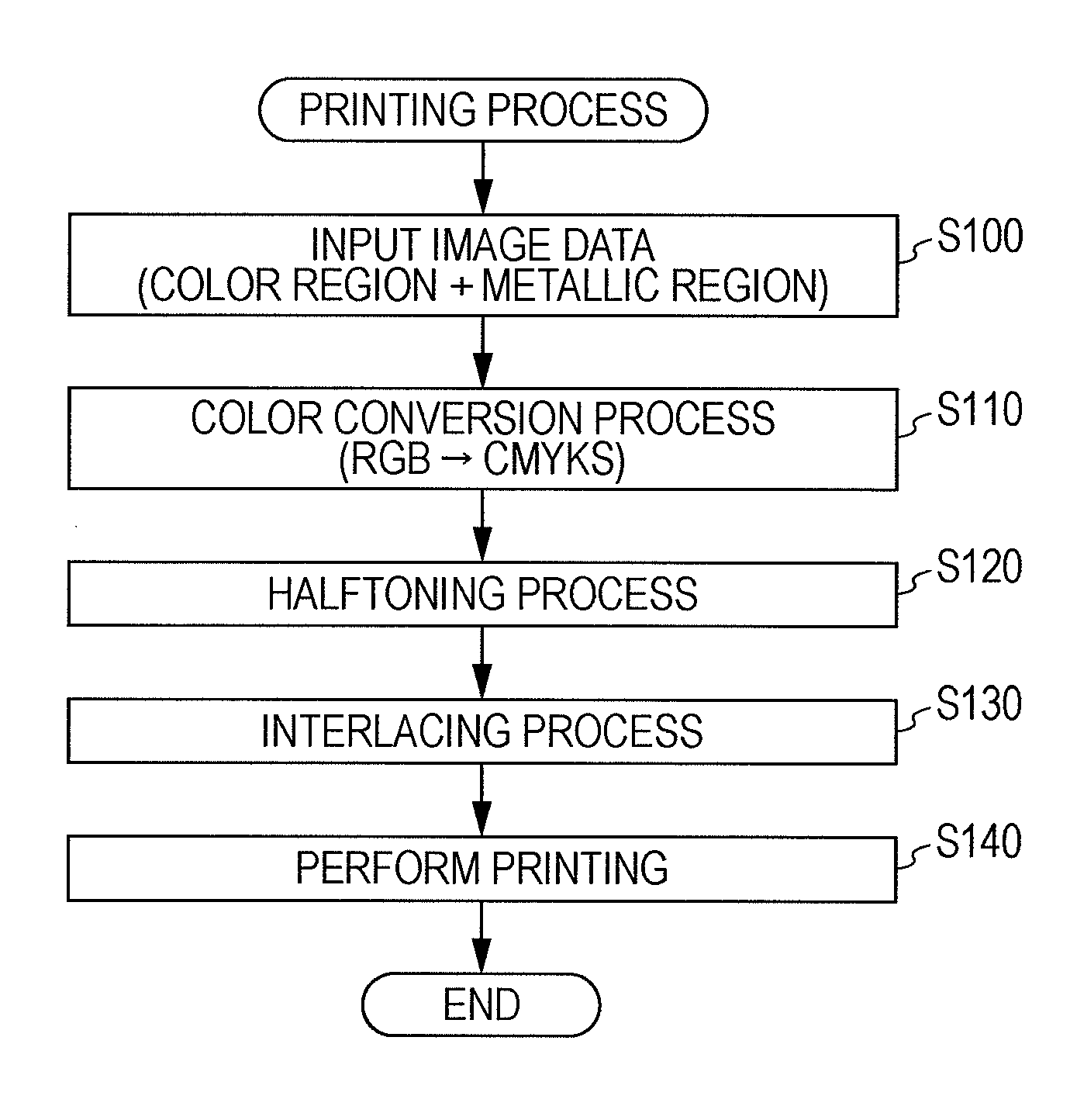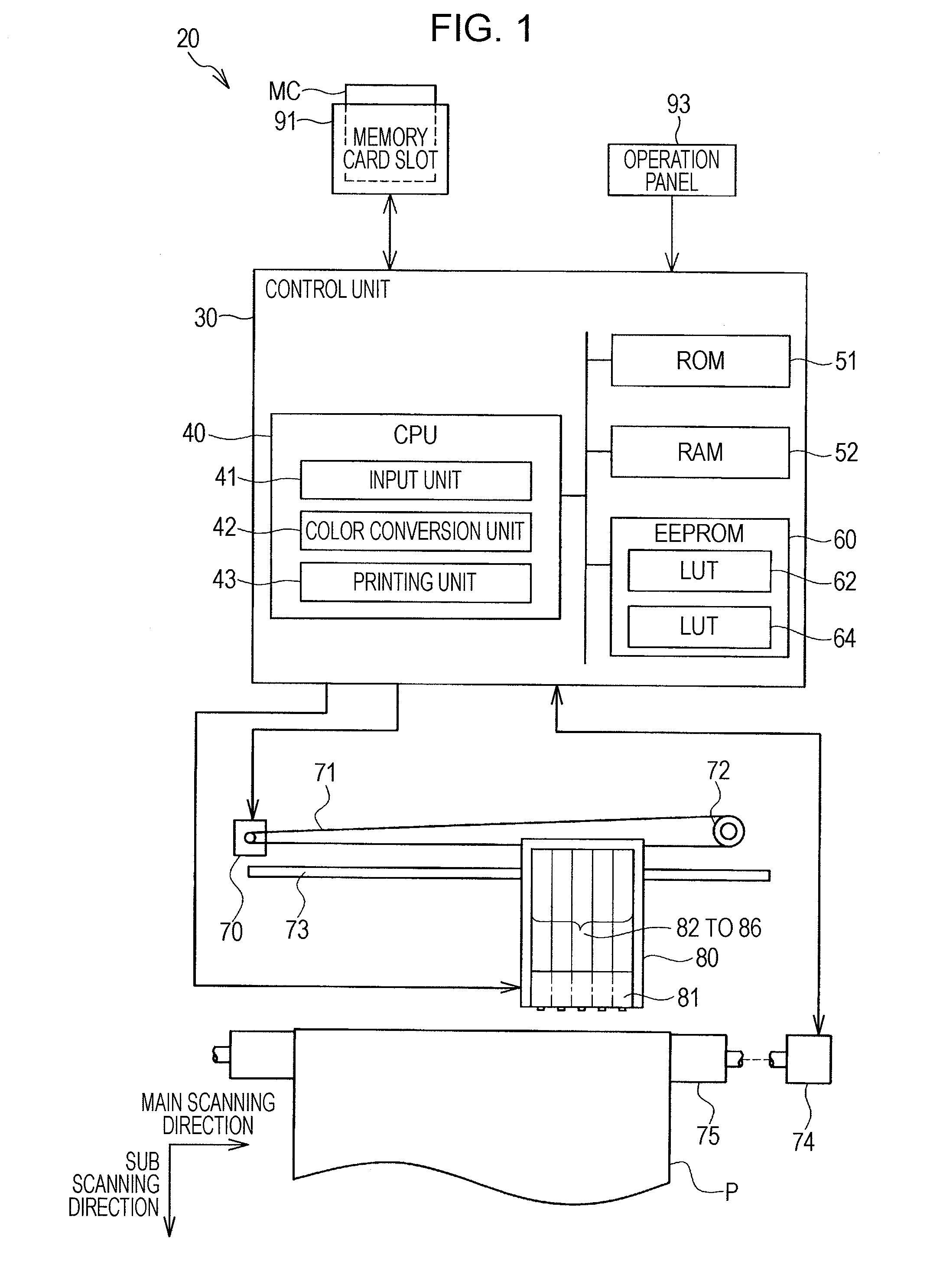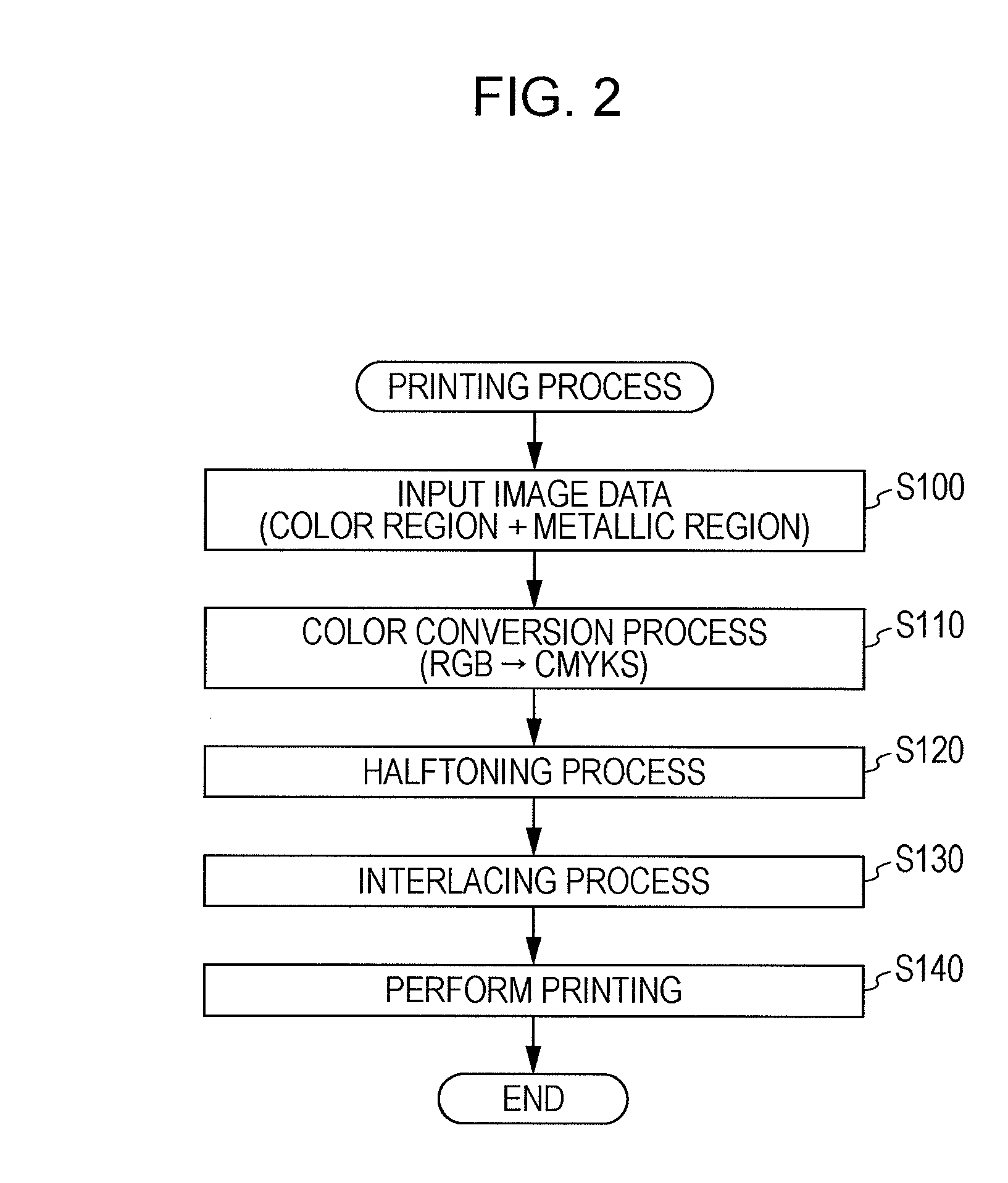Method of creating lookup table, printing apparatus, lookup table, and printing method
a lookup table and lookup table technology, applied in the field of printing methods, can solve the problems of reducing the output value unnecessarily severe duty limitation, and overlapping of metallic ink, and achieve the effect of reducing the amount of special gloss ink
- Summary
- Abstract
- Description
- Claims
- Application Information
AI Technical Summary
Benefits of technology
Problems solved by technology
Method used
Image
Examples
first modified example
D-1. First Modified Example
[0066]In this example, the configuration in which the amount of the metallic ink S to be used is reduced in a case where a brightness (L*) of color expressed by color ink is equal to or less than a predetermined value is described. However, the index for reducing the amount of the metallic ink S to be used is not limited to brightness and various types of indices relating to color intensity expressed by color ink may be employed. For example, luminance, ink duty, and the like may be employed.
second modified example
D-2. Second Modified Example
[0067]In this example, a reduction point of the metallic ink S is determined by performing color measurement on the color patch. However, the color measurement may not be necessary and may be omitted. Accordingly, the LUT 62 may be created more simply. Here, of course, determining a reduction point of the metallic ink S by performing color measurement as in this embodiment is more preferable, since this can reliably suppress the brightness inversion phenomenon.
[0068]The order of determining the output values of color ink and metallic ink S is not limited to the order of the embodiment, and may be suitably determined. For example, the following determining order may be employed. First, the output value of metallic ink S is determined at every lattice point. The output value of metallic ink S is set to be relatively reduced at a color gradation close to black as in the embodiment. It is preferable that the reduction starting point of metallic ink S be set a...
third modified example
D-3. Third Modified Example
[0070]In the aforementioned embodiment, the configuration in which the ink duty of metallic ink S is 30% in the printing region where L* is larger than the reduction point of metallic ink S and the ink duty of the metallic ink S is reduced to zero at black with the decrease in L* from the reduction point of the metallic ink S, is illustrated. However, a method of reducing the ink duty of the metallic ink S may be suitably set in consideration of a printing condition such as a printing medium, required printing quality, an amount of the metallic ink S to be saved, and the like. For example, the upper limit of the ink duty may be set to 25% or 35%, or the ink duty may be set to zero at a point having an L* higher than that of black. Otherwise, a configuration in which the ink duty may be set to, for example, 10% so as not to be zero at black may be employed. This example is not limited to the original configuration of reducing the amount of the metallic ink ...
PUM
 Login to View More
Login to View More Abstract
Description
Claims
Application Information
 Login to View More
Login to View More - R&D
- Intellectual Property
- Life Sciences
- Materials
- Tech Scout
- Unparalleled Data Quality
- Higher Quality Content
- 60% Fewer Hallucinations
Browse by: Latest US Patents, China's latest patents, Technical Efficacy Thesaurus, Application Domain, Technology Topic, Popular Technical Reports.
© 2025 PatSnap. All rights reserved.Legal|Privacy policy|Modern Slavery Act Transparency Statement|Sitemap|About US| Contact US: help@patsnap.com



